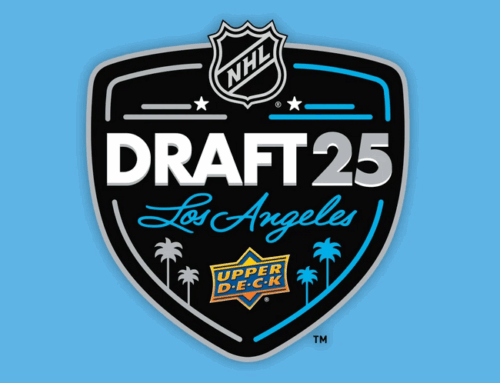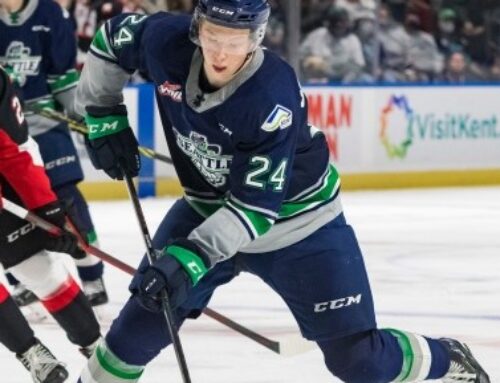Prospect Ramblings: Are we actually getting better at scouting?
Hayden Soboleski
2018-02-18

***
One of the most fun (but often depressing) things to do is to look back at draft days from years past, and see the inevitable big misses. NHL teams' scouting departments aren't perfect and never will be, but with the amount of travel and video accessible to scouts these days, I would assume that, on average, fewer players are slipping through the cracks. There will always be late bloomers, or players that needed to be passed-over to find their inspiration to improve, but the stars, the first-line forwards and the top-pair defensemen probably shouldn't be slipping too far in this day and age. As per good scientific behavior – I want to check this assumption that we're actually getting better at this.
To evaluate scouting improvement over the years, I'm going to look at a five factors:
1. How many NHL roster players are coming out of the top 4 rounds?
2. How many superstars fell past the top-10,
3. How many stars (first-line/top-pairing players) fell into the second round,
4. How many stars fell past the 2nd round.
5. How many top-10 picks have been busts?
There are far more mathematical ways to do this evaluation. Lots of late-first-round duds wont be seen in this analysis. The true value 2nd and 3rd line players stolen in later rounds isn't really seen in this study. The primary players captured here are the cream of the crop, to see if these top names are slipping less than they used to.
PLEASE REMEMBER this is an opinion piece. Obviously putting players into categories like this is subjective, especially the "superstar" label. I'll be using my own opinion for that category. A "star" player is someone who has spent significant (and deserved) time on a first line or top pairing, not just time as the best player bad team. A bust isn't just a "not living up to expectations" situation, it means the player had either a very short pro career or never amounted to more than a 4th/fringe 3rd line regular. An NHL roster player is someone who provided above-replacement-eve value for at least one full season. For later years included here, there is always potential for late bloomers to change these numbers. Feel free to argue with me on twitter regardless.
Let's get to it! I'm going to look at every draft year from 2004 – 2014 (its still too soon to evaluate the 2015, 2016, and 2017 drafts in my opinion). Here's the raw number results (separated into separate plots so its easier to read):

Let's break this one down before moving on to the others. Its slight, and choppy in recent years (where players are still developing and could change things), but there's an increase in 1st-round picks making the NHL, even if briefly. There's probably a good mathematical way to calculate true value being obtained from these picks, but for now I'll settle for just counting the ones that made it. After this first round improvement, everything else is pretty disappointing.
– 2nd round pick success has failed to improve, in fact it actually appears to decrease. My theory for this is the game getting faster. More than ever before, bottom-six players need the speed and skill that typically get players taken in the first round. And between 2010-2014, GMs didn't really know that this speed game was going to take over. Thus, all their 2nd round picks made during a physical era are having less success reaching the NHL in its current speed/skill state. Just my theory though.
– 3rd and 4th round pick success is pretty stagnant over the 10-year period. There's good years and bad years, but no real trend up or down. This is very disappointing to see, given how much more information scouts have these days compared to 2004. Hopefully once we can look at this data for even more recent years, this improves.
Onto more data:

Now for the second graph. Essentially, the number of star players slipping to the 2nd round was stagnant-ish until 2012, then got… fixed? Not totally – because we still see star players slipping even further in those year. In fact, the number of star players coming out past the 2nd round isn't really decreasing at all over time. So while we seem to be able to better distinguish a 1st-rounder from a 2nd, we're still not improving at finding the real gems.
Onto the last graph. What I see in this one is that ever since 2011 (when teams inexplicably let Kucherov and Gaudreau miss the entire first round), there haven't actually been any more incidents like this. Sure, some players went higher or lower than they should have, but there wasn't any true disasters (see the list below for all names, but some of the players who didn't get drafted Top-10 were Giroux, Karlsson, Tarasenko…).
The other half of the second graph is the Top-10 busts. These were harder to define but still important to count – mainly because it's an area of serious improvement over the years. From 2004 – 2010 there wasn't a single year without a bust, and 4 years with more than 1! But in the 4 years since then, the only "busts" by my count (remember – underperforming doesnt make you a bust, but failing to become a regular does), are Griffen Reinhart and Vlad Nichuskin (who could very well shed that label if he returns one day). Probably the greatest indicator of scouting improvement in this study is the decline of busts in the Top-10 and superstars outside of it.
Because I know you wont be satisfied without seeing the actual names I bundled into these groups, here you go. Argue away.

Fun fact: Freddie Andersen on there twice is not a typo, he was drafted twice, both outside the second round. Now among the top goalies in the league. It's a crazy league.
***
I hope you enjoyed! Thanks for reading, and best of luck in fantasy playoffs.
Hayden Soboleski





